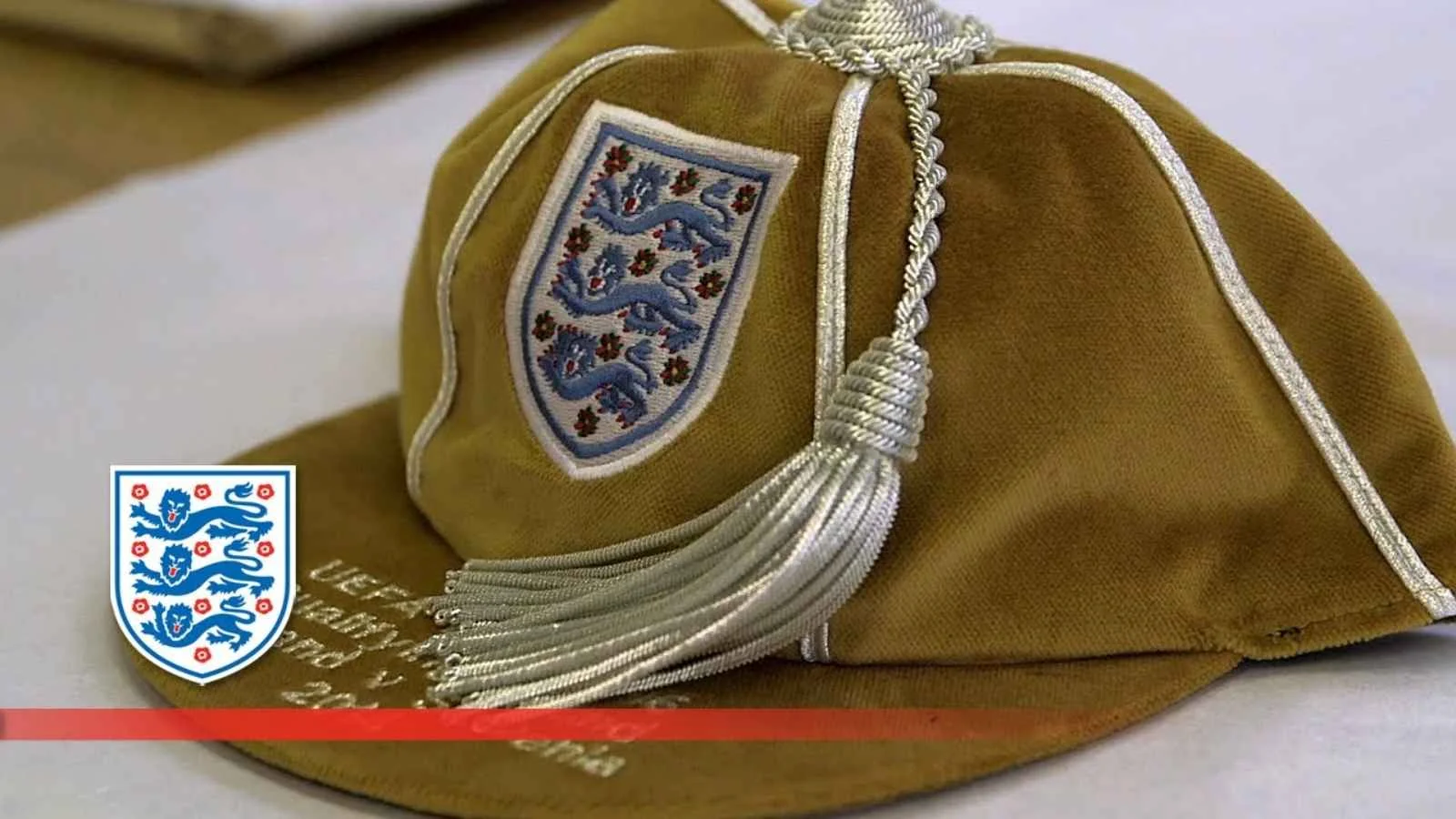Soccer, known as football in many parts of the world, is more than just a game; it’s a passion that unites millions.
One intriguing aspect of soccer is the concept of caps, which represents a player’s international experience. In this blog post, we’ll delve into the definition of caps, their historical context, how players earn them, and the fascinating statistics surrounding them.
By the end, you’ll have a comprehensive understanding of what caps are and their significance in the beautiful game.
Definition of Caps in Soccer
In the world of soccer, a cap refers to the number of times a player has participated in an international match for their national team. This includes games that can be friendly, qualifying, or part of major tournaments like the FIFA World Cup. Caps serve as a valuable metric, showcasing a player’s experience and contribution to their country’s soccer history.
Key Terms
- Caps: A term in soccer representing the number of times a player has played for their national team in international matches.
- International Match: A game played between two national teams, which can be friendly, qualifying, or in major tournaments.
- FIFA: The governing body of soccer that sets regulations for international play and caps.
- National Team: A team representing a country in international competitions.
Historical Background of Caps
The origin of caps dates back to cricket in the 19th century, where players received commemorative caps as a symbol of their achievements. The term gradually made its way into soccer, where it now represents not just participation but also the honor of representing one’s country.
Milestones in Cap History
- First Recorded Caps: The first player to earn an international cap is believed to be Charles Wreford-Brown of England, who debuted in 1882.
- Evolution of the Term: Over time, the significance of caps expanded, with players now seen as ambassadors of their nations on the world stage.
How Players Earn Caps
Players earn caps by being selected to represent their national team in international matches. Here’s how the process generally works:
- Player Selection: National team coaches select players based on their performance in club football, training sessions, and overall fitness.
- Match Participation: A player must participate in an official match to earn a cap. This can include:
- Friendly Matches: Non-competitive games that help teams prepare for major tournaments.
- World Cup Qualifiers: Matches that determine which teams will compete in the World Cup.
- Major Tournaments: Participation in events like the FIFA World Cup, UEFA European Championship, and Copa America.
FIFA Regulations on Caps
FIFA, the international governing body of soccer, has specific regulations regarding how caps are awarded:
- Minimum Participation Requirement: According to FIFA regulations, a player must play at least one minute in an international match to earn a cap. This ensures that mere selection does not automatically equate to a cap.
Regulations Overview Table
| Regulation | Description |
| Minimum Play Time | A player must play at least one minute to earn a cap. |
| Match Types | Caps can be earned in friendlies, qualifiers, and tournaments. |
| Official Recognition | FIFA recognizes caps earned in all official international matches. |
Caps for Bench Players
One common question arises: Can players earn caps while sitting on the bench? The answer varies by country:
- National Team Policies: Some national teams may count bench appearances as caps, especially in friendly matches. However, this is not universally accepted, and many teams adhere strictly to the requirement of participating in the match.
Dual Nationality and Caps
Players with dual nationality have the opportunity to earn caps for multiple countries. Here’s how it works:
- Eligibility: Players can switch allegiance to another national team if they meet FIFA’s eligibility criteria.
- Examples: Players like Ousmane Dembélé (France) and Thierry Henry (France, originally eligible for England) have earned caps for their respective national teams.
Gender Disparities in Caps
An interesting trend in soccer is the gender disparity in caps, particularly between male and female players. Here’s why female players tend to earn more caps:
- Increased International Tournaments: The growth of women’s soccer has led to more international tournaments and friendly matches, allowing female players to accumulate caps faster.
- Investment in Women’s Soccer: Recent years have seen increased investment and visibility for women’s soccer, leading to more opportunities for female players.
Women vs. Men: Caps Comparison
| Player | Gender | Caps |
| Kristine Lilly | Female | 354 |
| Ahmed Hassan | Male | 184 |
| Christie Rampone | Female | 311 |
| Cristiano Ronaldo | Male | 180 |
| Christine Sinclair | Female | 301 |
| Sergio Ramos | Male | 180 |
Players with the Most Caps in History
When it comes to soccer, certain players stand out for their remarkable achievements in terms of caps. Here’s a look at the players with the most caps in history:
- Ahmed Hassan: Holds the record for the most caps in men’s soccer with 184 caps representing Egypt.
- Kristine Lilly: The all-time leader in women’s soccer with an astonishing 354 caps for the United States.
Notable Players and Their Caps
| Player | Gender | Country | Caps |
| Kristine Lilly | Female | USA | 354 |
| Ahmed Hassan | Male | Egypt | 184 |
| Christie Rampone | Female | USA | 311 |
| Cristiano Ronaldo | Male | Portugal | 180 |
| Christine Sinclair | Female | Canada | 301 |
| Sergio Ramos | Male | Spain | 180 |
Current Active Players with Most Caps
As of 2024, here are the active players with the most caps:
- Cristiano Ronaldo: An iconic figure in soccer, Ronaldo has amassed 180 caps for Portugal and continues to play at a high level.
- Sergio Ramos: The legendary Spanish defender also has 180 caps, contributing to Spain’s national team with his leadership and skill.
Current Players Caps Table
| Player | Gender | Country | Caps |
| Cristiano Ronaldo | Male | Portugal | 180 |
| Sergio Ramos | Male | Spain | 180 |
| Lionel Messi | Male | Argentina | 153 |
| Bader Al-Mutawa | Male | Kuwait | 164 |
The Impact of Caps on Player Careers
Earning caps has significant implications for players’ careers. Here’s how caps can influence a player’s trajectory:
- Career Recognition: Players with high caps often gain recognition as experienced and reliable members of their national team.
- Endorsements and Opportunities: Caps can enhance a player’s marketability, leading to sponsorships and endorsements.
- Legacy: Accumulating caps contributes to a player’s legacy and status in soccer history, with high caps often regarded as a testament to dedication and skill.
Future Trends in Earning Caps
The landscape of soccer is ever-evolving, and several factors may influence how players earn caps in the future:
- Youth Development Programs: With increasing investment in youth academies, younger players may find more opportunities to earn caps.
- Global Tournaments Expansion: The expansion of international tournaments could lead to more matches, providing players with additional chances to earn caps.
- Increased Visibility: As women’s soccer gains traction, more female players will likely have opportunities to earn caps, further bridging the gender gap.
Conclusion
Caps in soccer represent more than just numbers; they signify dedication, commitment, and national pride. Understanding the history, regulations, and statistics surrounding caps enriches our appreciation of the game.
Whether it’s the legendary players with the most caps or the emerging talents shaping the future, caps will continue to be an essential part of soccer’s narrative.
Additional Resources
For those interested in further reading, here are some authoritative sources and databases related to caps in soccer:
- FIFA Official Website
- National Soccer Hall of Fame
- ESPN Soccer Statistics
By grasping the concept of caps and their implications in soccer, fans can better appreciate the achievements of players and the sport’s rich history. As soccer continues to grow globally, the stories behind these caps will only become more compelling.

Ethan Richards is a dedicated sports writer who excels in delivering timely and accurate sports news. His meticulous research and clear, concise writing make his articles both informative and enjoyable. Ethan’s commitment to quality journalism sets him apart in the industry.











